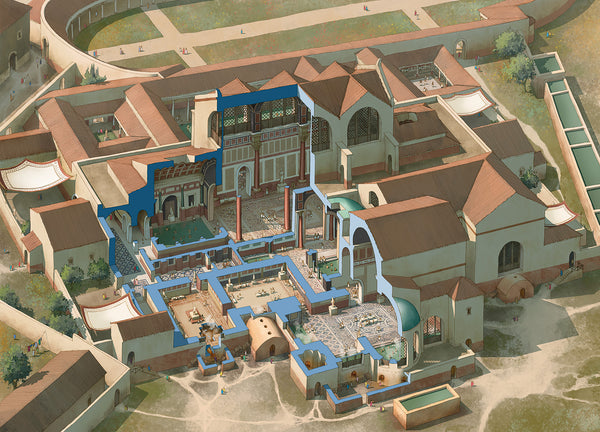The shape of things to come
 At present, we’re hard at work on finishing Ancient History magazine issue 8, which is being edited by Peter Konieczny of Medieval Warfare (with me looking over his shoulder!). From issue 9 onwards, I’ll be fully handling Ancient History, and we’ve just had a productive talk in the office about the future of the magazine. The most important points that we’ve talked about I want to share with you in this blog post.
At present, we’re hard at work on finishing Ancient History magazine issue 8, which is being edited by Peter Konieczny of Medieval Warfare (with me looking over his shoulder!). From issue 9 onwards, I’ll be fully handling Ancient History, and we’ve just had a productive talk in the office about the future of the magazine. The most important points that we’ve talked about I want to share with you in this blog post.
There are two key things that need to be emphasized when it comes to Ancient History. The first is that reading about the ancient world should be fun. There are loads of reasons why studying the ancient world is important, but the main reason you pick up a magazine is to be entertained. If you also happen to learn a thing or two along the way, that’s great, too.
And I’ll let you in on a bit of a secret, often only whispered in the corridors of colleges and universities: professional academics don’t study something primarily because it’s important, but because it’s something they think is fun. I wrote my PhD thesis on the socio-cultural dimensions of warfare in Early Greece mainly because I thought it was fun to read Homer and other early poets, sift through Hesiod, look at ancient swords and spears, and examine beautiful vase-paintings. Naturally, there are other reasons to study Greek warfare, but no one wants to devote years of their life doing something that they don’t find enjoyable.
Which brings me to the second thing that I want to emphasize when it comes to Ancient History. It’s all well and good to study different aspects of the ancient world for fun, but when you publish a magazine centred on a particular theme, you need to tie everything together in some way. What you need, in short, is to tell a story.
Humans differ from other animals, I think, in their ability to use a very intricate form of language. The earliest modern human beings would huddle together around a fire and tell each other stories. These stories weren’t just about where to find water or how to kill prey. Soon, they would have begun to tell stories about the world, about adventures real or imagined, and about things that could only be seen in the mind’s eye.
I’ve spent four years as editor of Ancient Warfare, editing a total of 26 issues, and figuring out the story for each theme was never very difficult. It’s the advantage of doing a magazine focused on military history: there’s a distinct aim that the protagonists are striving to achieve, there’s a list of characters you can pick from, and there’s a plot to follow when it comes to campaigns and individual battles. With Ancient History, it falls to the editor to bring focus to particular topics: to suggest a main storyline for each theme.
I have updated the editorial plan to make it clear what my vision is for each of the upcoming issues. If you check the editorial plan, you’ll see not just my ideas for existing issues (9 through 12), but also find out what themes I picked for issues 13 through 18. Each issue has a brief synopsis, explaining the story that I want to tell. If you think you can contribute, feel free to send me a proposal for an article; I would love to hear from you.
And if you don’t have any ideas for theme-related articles, feel free to send me your non-theme-related proposals. Just make sure that your proposal fits with the two key aspects that I want to emphasize in Ancient History: it needs to be fun and each issue needs to tell a particular story.

